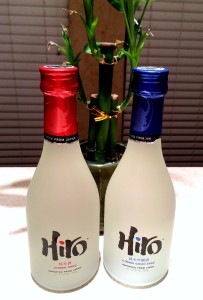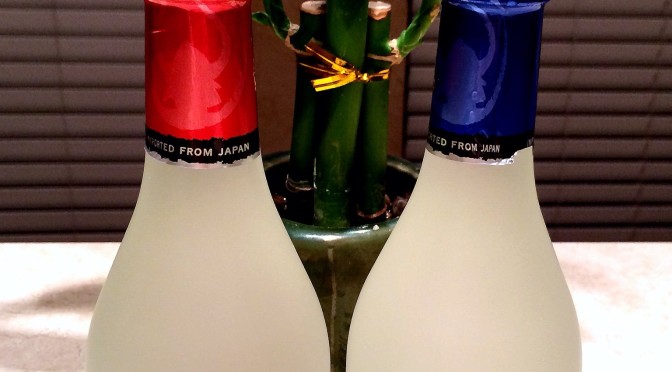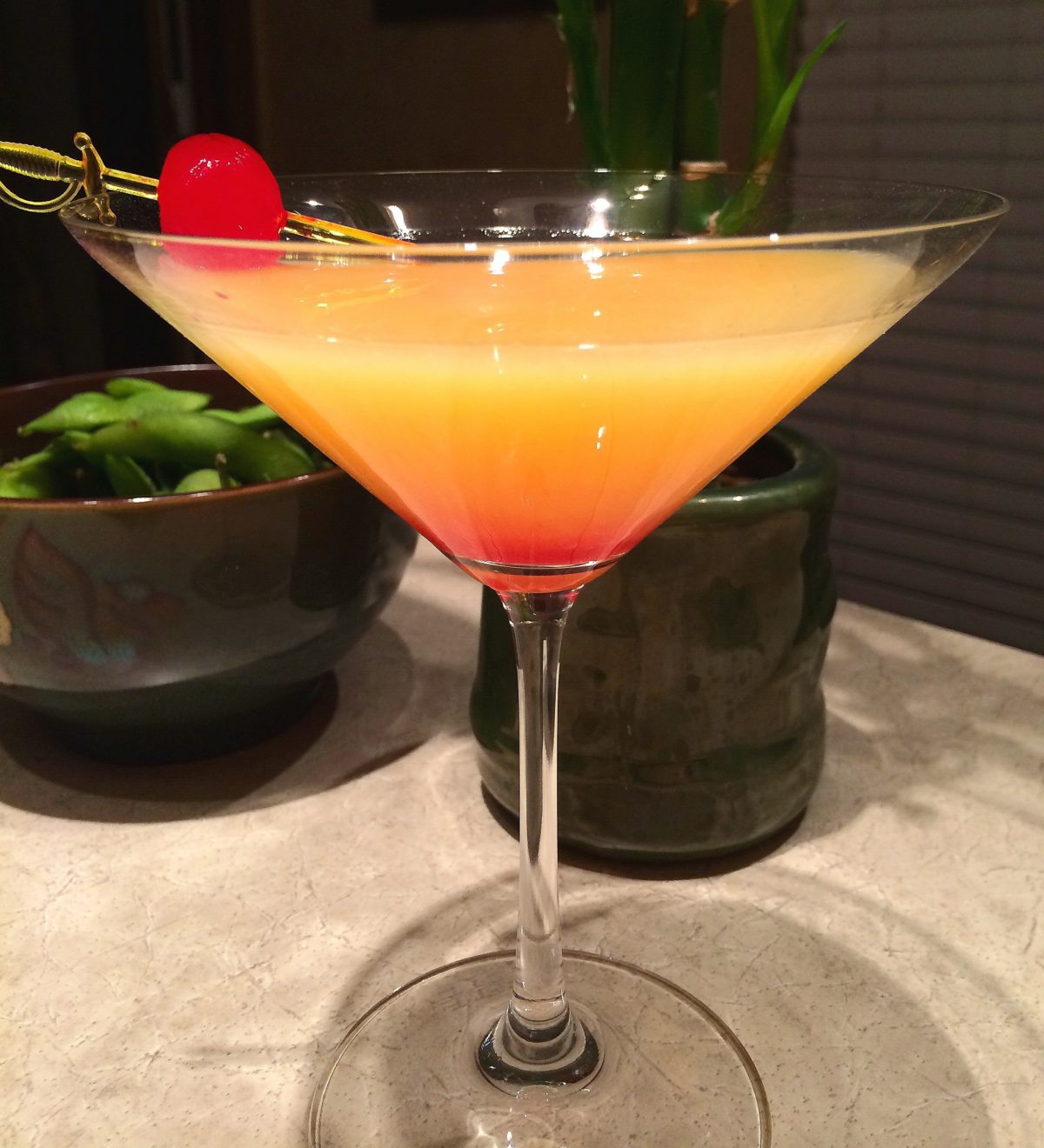I will be the first to admit … I don’t have a long-standing relationship with sake. While I am well-acquainted with the sake bomb, something tells me most establishments aren’t in the habit of preparing that deceitful duo with hand-crafted, premium sake. (Just a hunch … reinforced by my regular Thursday morning hangovers after Wednesday night sushi night.) This is why I was super excited to have the opportunity to expand my boozy horizons when I found out I would be receiving two bottles of Hiro Sake in the mail.
First, a little background on sake in general, in the event that you’re a total noob, like me: Sake is a Japanese rice wine, representing an integral part of Japanese culture for more than 2,000 years. The fermentation process is not unlike the brewing process for beer; if you are interested in learning more about what that process is like, go here. Sake is a versatile spirit; it can be served chilled or warmed, and can be enjoyed straight up or in any number of cocktails. It pairs well will Japanese food (DUH), but also cheese, chocolate, and a wide assortment of other foods.
 Now, let’s talk Hiro Sake. Hiro Sake is brewed in the Niigata prefecture, which is apparently the premier sake producing region in Japan. Hiro Sake is a great option for anyone seeking a “lighter, cleaner” cocktail option; Hiro Sake contains only 39 calories per ounce, is gluten free, and contains no preservatives, additives, sulfites, or histamines. Hiro Sake has 1/3 the acidity of wine, making it easier to drink (read: no headache, no heartburn).
Now, let’s talk Hiro Sake. Hiro Sake is brewed in the Niigata prefecture, which is apparently the premier sake producing region in Japan. Hiro Sake is a great option for anyone seeking a “lighter, cleaner” cocktail option; Hiro Sake contains only 39 calories per ounce, is gluten free, and contains no preservatives, additives, sulfites, or histamines. Hiro Sake has 1/3 the acidity of wine, making it easier to drink (read: no headache, no heartburn).
Hiro Sake generously sent me two bottles to sample, and the first one I was tried was Hiro Junmai Sake, otherwise known as Hiro Red (which I find slightly easier to remember, but maybe that’s just me). The Hiro Junami (not Jumanji) is brewed using the traditional method, and can be served chilled or warmed. I decided it would only be fair to try it both ways.
First, I opted to try Hiro Junmai warmed. While instructions can be found online for warming sake in the microwave (*wink*), this is apparently not the preferred method for preparing warm sake. Here is what you are SUPPOSED to do:
Place the opened bottle in a pot with water that has almost gotten to boiling point and removed from the stove. Leave the bottle for a couple of minutes until the desired temperature is reached. Serve.
The ideal temperature for hot Japanese Sake depends on everybodys taste, running from 85ºF to 130ºF. Japanese Sake should not be heated above 140ºF or boiled.
So, how was it? Smooth, clean, and light- as promised- with an appealing, mildly bitter edge. Surprisingly easy to drink. This was a great accompaniment for the giant pile of sushi I ordered in honor of my sake tasting party*.
Next, I sampled the Hiro Junmai in a cocktail (again … it’s only fair to do so):
Hiro Sunrise
2 oz HIRO JUNMAI Sake
3 oz orange juice
0.5 oz ounce grenadine cubed ice
Fill a glass with ice. Add HIRO JUNMAI Sake and fill with orange juice; stir. Slowly pour in grenadine and let it settle before serving.
The verdict: this cocktail was delicious (and pretty!), but I have to say that I felt as though the OJ overpowered the delicate flavor of the sake. If you want to experience the sake, experience the sake! I would actually recommend drinking it warmed with no mixer.
The next sake I sampled was Hiro Junmai Ginjo (aka Hiro Blue). Hiro Junmai Ginjo purports to “bridge the heritage of the past with the way we drink today”. Produced with rice that is polished or milled to remove at least 45% of its original weight, Hiro Junmai Ginjo has added character and body that enables it to be served chilled, on the rocks, or in a cocktail.
After the OJ experience, I decided I really wanted to try the Hiro Junmai Ginjo chilled with no mixers, so I could really experience the flavors of the sake. (Side note: while I was doing my homework online, I read that higher quality sakes are best enjoyed chilled, and lower quality sakes should be reserved for warming. The Junmai Ginjo definitely fits the premium bill.)
I found the Hiro Junmai Ginjo to be exceptionally crisp and light. I was surprised at how delicate the flavors were; just the slightest hint of sweetness with a clean finish. The Junmai Ginjo is delightfully easy to sip. This was my favorite of the two.
If you still insist on enjoying your sake in a cocktail, here are two additional recipes to try (though I strongly encourage you to try it straight up first!):
Super Hiro
2.5 oz HIRO JUNMAI GINJO Sake
1 oz vodka
1 Japanese cucumber cut into rounds for garnish
Pour HIRO JUNMAI GINJO sake and vodka in a cocktail shaker over cubed ice and shake well. Strain into a martini glass and garnish with a slice of Japanese cucumber.
Hiro Spritzo
1 oz HIRO JUNMAI Sake
1 oz prosecco
1 oz Aperol or Campari
1 1/2 oz. soda water
Combine all ingredients. Pour over ice, and serve in a Collins glass or large wine glass.
HIRO SAKE
720 ml and 330 ml bottles
Hiro Red – $29.99/$15.99 (SRP)
Hiro Blue – $39.99/$19.99 (SRP)
To find out where you can purchase Hiro Sake, or to purchase online, go here.
*Said party may have consisted of my fiancee and I on the couch in our pajamas, eating take out, trying to catch up on “Game of Thrones” on our HBO Go. But I assure you, it was festive.

